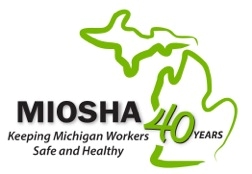Safety
Recent Safety Bulletins
Job Site Forms
Foreman Checklist
Job Site Analysis Form
Job Site Analysis Checklist
Job Site Analysis Field Form
Excavator Checklist
One of MITA’s key service areas is safety. Safety encompasses trainings, information, updates and regular inspections of job sites to ensure that member companies are in compliance and are keeping themselves and motorists as safe as possible when work is being done. The links below are linked to pages that will provide information and answer questions that you may have regarding issues of safety, compliance and workforce development.
Request A Job Site Inspection
Getting your job site inspected is an important part of taking responsibility for the safety of the employees you have hired.
Safety is the most important part of keeping a job site running smoothly and professionally. When the responsibility of safety rests on the shoulders of your qualified individual, they cannot be in all places of the job site at once.
MITA Job Site Inspections can help to identify potential hazards that can be overlooked. A second set of eyes from MITA can help to pinpoint the problem areas and prevent the occurrence of a MIOSHA citation.
Please click here to download the Job Site Inspection Request Form or use the electronic form below to submit your request.
MIOSHA Appeals
When you receive a MIOSHA citation, please contact the MITA office immediately so we can help you through the appeals process.
Remember that the appeals process is extremely time-sensitive and that we can only help you if we receive the appropriate forms and information from you in a timely fashion.
The following MITA staff members are available to assist you through the MIOSHA appeals process:
Greg Brooks, Director of Safety & Workforce Development
Please email Greg at gregbrooks@thinkmita.org.
Sarah Alex
Please email Sarah at sarahalex@thinkmita.org.
Greg and Sarah can be reached at the MITA office by calling 517-347-8336.
MIOSHA Reporting Forms
ACCIDENT PREVENTION PROGRAM – Company safety programs are available in large, 3-ring binders with your company name inserted where appropriate. This is detailed and specific to the type of work your company performs.
INJURY/ILLNESS REPORTING – Several MITA members have inquired about which injuries and illnesses need to be recorded on their MIOSHA 300 logs. “Recordable injuries and Illnesses” means an injury or illness that meets the general recording criteria and therefore is recordable if it results in any of the following: Death, days away from work, restricted work or transfer to another job, medical treatment beyond first aid or loss of consciousness.
MIOSHA CITATION APPEAL SERVICE – When you receive a MIOSHA citation, either email it to sarahalex@thinkmita.org, or fax it to MITA at 517-347-8344 immediately! There are only 15 working days in which to submit an appeal. Our staff will help you through the entire administrative process.
MIOSHA INJURY/ILLNESS REPORTING – MIOSHA requires that every company create an annual summary report MIOSHA 300 that were recorded during the previous year and post them from February 1 to April 30. MIOSHA also requires employers to fill out an Injury and Illness Incident Report (Form 301) within seven calendar days of receiving information that a recordable injury or illness has occurred. Under the Administrative Rules, each company shall create, certify and post a summary at each establishment in a conspicuous place or places where notices to employees are customarily posted. Be prepared and have this information on hand; MIOSHA safety officers are asking for it. Click here to download the forms to fulfill these requirements. If you have any questions, please contact Greg Brooks at gregbrooks@thinkmita.org or call the MITA office at 517-347-8336.
SITE REVIEW WITH REGARD TO MIOSHA COMPLIANCE – The MITA Director of Safety & Workforce Development will come to your office or job site to make sure your company is following all MIOSHA safety procedures. There are two levels of safety reviews: Level One is a thorough review of your company’s corporate safety program. Level Two consists of an on-site review of a construction site to determine field implementation of written safety programs and more. A written analysis is provided for both review levels.
Michigan Manual on Uniform Traffic Control Devices
This excerpt from the Michigan Manual on Uniform Traffic Control Devices references Part 6, which pertains to construction and maintenance.
Part 6, Temporary Traffic Control
The primary function of TTC is to provide for the reasonably safe and effective movement of road users through or around TTC zones while reasonably protecting road users, workers, responders to traffic incidents and equipment.
No one set of TTC devices can satisfy all conditions for a given project or incident. At the same time, defining details that would be adequate to cover all applications is not practical. Instead, Part 6 displays typical applications that depict common applications of TTC devices. The TTC selected for each situation depends on type of highway, road user conditions, duration of operation, physical constraints and the nearness of the work space or incident management activity to road users.
Report A Near Miss
Public Act 174 ~ MISS DIG
The passage of P.A. 174 was a huge achievement for the underground side of the industry in 2013.
The MISS DIG Act was originally established in 1974 and has since governed utility locating throughout Michigan. The original form of the law was written by utility owners and thus was very lopsided when it came to assessing liability regarding damage responsibility. Essentially, if you hit an underground facility, in most cases you were sent a claim for damages. In the late 1990s, the then AUC voiced its concerns with the legislature, which was reluctant to change the law. Legislative leaders then requested that the contracting community and facility owners work out differences and bring revised language back to the legislature at a later date.
The Michigan Damage Prevention Board (MDPB) was formed in 2000. The mission of the newly formed group was to develop a new public act through a contractual arrangement known as the “Best Practices” for utility locating. The concept was to allow for the industry to work under a contract that could be changed over time based on the performance of the provisions set forth in the Best Practices. If a provision wasn’t working for either party, the item could be renegotiated by the Damage Prevention Board. It took three years to develop the first “Best Practices” contract, and it was then amended in 2005 to add further agreed upon provisions and has since been the industry standard.
After numerous years of a steady reduction of damages for those working under the contract, the focus then turned toward codifying the “Best Practices” into law. After months of heated legislative debate and numerous committee hearings, the bill gained momentum and passed both chambers with overwhelming support.
Although the vast majority of MITA members had previously signed on to the contract, there were some significant changes put into the new public act that benefit the industry. Under the new law the biggest change from the Best Practices contract is that every owner must now adhere to the MISS DIG requirements. Each municipality will be required to mark all of its underground facilities in a locatable manner (other than service leads). In addition, local units of government will no longer have immunity if they damage a utility that was accurately marked. Conversely, contractors will no longer be subject to the claims associated with any damage to a utility that is not marked properly.
Another major change that took place during the legislative process is that the caution zone was changed from 60” to 48”, thus allowing contractors to excavate another foot closer to a marked facility before hand digging would be required. Also, MITA advocated and gained the needed support to ensure that all new facilities in the future be installed in a manner that would be locatable with tracer wire. This is an important safety measure for the industry and will help simplify locating efforts in the future.
Safety Directors Group
The Safety Directors Group is an exclusive resource for safety directors and will be used to provide information and updates on issues and areas of concern that directly impact the important work that safety directors provide for their respective companies.
Please check back often for new information. Do you have questions or concerns that aren’t necessarily addressed on this page? Please contact Greg Brooks, MITA’s Director of Safety & Workforce Development, at 517-347-8336 or at gregbrooks@thinkmita.org.
Training Opportunities
Training topics and descriptions are listed below.
Want more information?
Use the form at the bottom of the page to submit an electronic request to receive MITA safety training for your employees!
CPR and First Aid Training – MIOSHA requires at least one person on a job site to be trained in CPR and First Aid. Courses are available at a location and time of your choice.
Confined Space Training – This popular class covers both permit and non-permit requirements. Learn what is required to enter a confined space. Learn the definition of a confined space (CS). Learn what MIOSHA standards are associated with confined space entry. MITA recommends periodic refresher training in confined space. Contact Greg Brooks at 517-347-8336 for more information.
Fall Protection – Learn how to avoid the #1 killer in construction. Updates on current methods being used in the field to protect employees from falls are available.
Traffic Regulator/Flagger Training
All Trades – This informative session talks about what to expect during a MIOSHA inspection and how to deal with it.

OSHA 10 or 30-Hour Outreach Training – Upon completion of the OSHA Outreach Training, participants will receive OSHA cards. These classes are often required to work for certain owners or general contractors.
Reasonable Suspicion (For Drugs/Alcohol) – Do you have a drug/alcohol policy? If so, do the people responsible for implementing it know what to look for? This 2-hour course will help your company put the right foot forward and create a safer workplace. Contact Matt McClintick at the MITA office for more information.
Trenching, Excavating & Shoring – There is never a bad time to refresh your memory on the details of underground construction.
Qualified Person Training
New Hire Orientation
Silica Crystalline
Utility Safety
Training Form Instructions & Information
Use the form below to request more information on available safety training. Training costs vary and will be quoted on a case by case basis.
MITA Safety & Health Policy
Click here to order your copy of the MITA Safety and Health Policy.
Variance Assistance
MITA is available to help members with variance issues. Contact Greg Brooks, at gregbrooks@thinkmita.org for assistance today.












